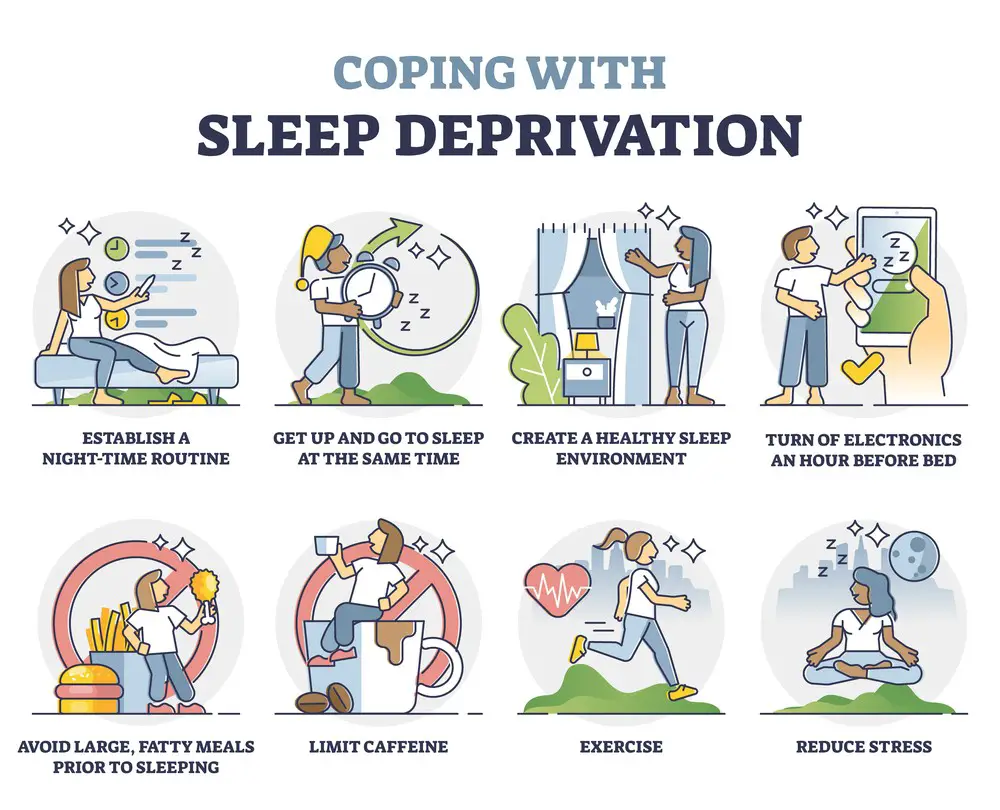As a BetterHelp affiliate, we receive compensation from BetterHelp if you purchase products or services through the links provided
In the hustle and bustle of daily life, our bedrooms often become just another space we pass through rather than a sanctuary designed for rest and rejuvenation. Yet, the importance of a good night’s sleep cannot be overstated—it’s the foundation of our health and well-being, impacting everything from our mood to our productivity. Creating a sleep-friendly bedroom environment is more than just a luxury; it’s necessary for anyone looking to improve their sleep quality and, by extension, their quality of life.
But where do you begin? The answer lies in understanding that our surroundings can deeply influence our ability to relax and drift off into peaceful slumber. From the comfort of our mattress to the air we breathe, every detail contributes to the overall ambiance of our sleeping space. Transforming your bedroom into a haven of tranquility might seem daunting, but with a few simple changes, you can turn your bedroom into a place where sleep comes naturally.
Let’s explore how to create a bedroom environment that beckons you to rest, making each night’s sleep a necessity and a pleasure.
Start with the Foundation
 Finding the right elements for a peaceful sleep starts with the very foundation of your bed – the mattress. It’s more than just a sleeping surface; it’s a crucial factor that can make or break your night’s rest. A mattress that hits the sweet spot between comfort and support can significantly improve your sleep, making you feel refreshed and ready to tackle the day.
Finding the right elements for a peaceful sleep starts with the very foundation of your bed – the mattress. It’s more than just a sleeping surface; it’s a crucial factor that can make or break your night’s rest. A mattress that hits the sweet spot between comfort and support can significantly improve your sleep, making you feel refreshed and ready to tackle the day.
Among the many options, the beauty rest black mattress available at The Mattress Factory shines as a top pick for those who don’t want to compromise their sleep quality. This mattress stands out because it is crafted to deliver unparalleled support and luxurious comfort thanks to its advanced technologies. But remember, choosing a mattress is a personal journey. What works for one person might not work for another. It’s essential to keep in mind your sleeping habits and preferences when shopping around.
The Role of Lighting in Sleep Quality
Light significantly influences our sleep patterns, with natural light helping to regulate our sleep-wake cycle. Managing the light exposure in your room is crucial to create a sleep-friendly bedroom. Blackout curtains are a simple solution to block out street lights or early morning sun. For those who enjoy reading before bed, consider installing dimmer switches or using bedside lamps with warm-toned bulbs to reduce blue light exposure before sleep. This can signal your body that it’s time to wind down, making it easier to fall asleep.
Keeping It Cool: The Ideal Bedroom Temperature
The temperature of your bedroom can significantly affect how well you sleep. Most sleep best in a slightly cool environment, around 65°F (18°C). This temperature supports the body’s natural drop in core temperature necessary for sleep onset. If your bedroom is too warm or cold, it can disrupt your sleep cycle, leading to a restless night. Experiment with your thermostat to find the temperature that works best for you. Additionally, consider using breathable bedding materials like cotton to help regulate your body temperature throughout the night.
The Sound of Silence: Managing Noise Levels
Noise is another critical factor that can impact your sleep quality. Unwanted sounds, from traffic noise to a snoring partner, can prevent you from falling asleep or wake you during the night. White noise machines can effectively mask disruptive noises, providing a consistent auditory backdrop that can make it easier to stay asleep. Earplugs are another simple, cost-effective solution for those particularly sensitive to noise. Creating a habit of using these tools can significantly improve your sleep environment and quality.
The Air You Breathe: Ventilation and Air Quality
Good air quality and ventilation are essential for a healthy sleep environment. Stale or polluted air can hinder your breathing and impact your sleep quality. An air purifier can remove allergens and pollutants from your bedroom, while a humidifier can add moisture to dry air, creating a more comfortable sleeping environment. Whenever possible, open windows to allow fresh air to circulate and refresh the room. However, be mindful of outdoor noise and light that might come in when windows are open, and adjust your bedroom setup accordingly.
Embracing Minimalism for Clarity and Calm
A cluttered bedroom can lead to a cluttered mind, disrupting your peace and making it harder to fall asleep. Embracing minimalism in your bedroom design can help maintain a calm environment. Keep decorations simple and functional, and use storage solutions to keep clutter out of sight. A minimalist approach contributes to a more aesthetically pleasing space and reduces distractions, helping you focus on relaxation and sleep.
Investing in Quality Sleep Accessories
In addition to a comfortable mattress and bedding, it’s worth considering investing in sleep accessories that can contribute to better sleep quality. For example, ergonomic pillows can provide support for your neck and back, which can help prevent discomfort. Weighted blankets can provide a sense of security and improve sleep quality for some people. Blackout curtains or eye masks can be especially helpful for those who are sensitive to light, while high-quality earplugs or a white noise app can help reduce the impact of noise.
 Creating a Connection with Nature
Creating a Connection with Nature
Incorporating natural elements into your bedroom can enhance the sense of peace and relaxation. Houseplants not only beautify the space but also improve air quality. Natural materials, such as wood and stone, can bring a sense of the outdoors inside, fostering a calming environment. Whenever possible, allow natural light to fill your room during the day, and enjoy views of nature from your windows.
Conclusion
Transforming your bedroom into a sleep-friendly environment is a step toward better health and well-being. By focusing on the right mattress, controlling light and noise, optimizing temperature, and adding personal and soothing touches, you can create a space that promotes restful sleep and serves as a peaceful retreat from the world.
Remember, the goal is to make your bedroom relaxing and recharge. Embrace these changes and look forward to nights of deeper, more restorative sleep, waking up refreshed and ready to face the day.
- 3 Ways Wearing a Hat Can Help Lower Your Stress Levels - April 19, 2025
- Breaking the Silence: Why Men’s Mental Health Matters More Than Ever - April 15, 2025
- How to Transform a Home’s Patio Space into a Relaxing Space - March 23, 2025
This site contains affiliate links to products. We will receive a commission for purchases made through these links.


 Creating a Connection with Nature
Creating a Connection with Nature
